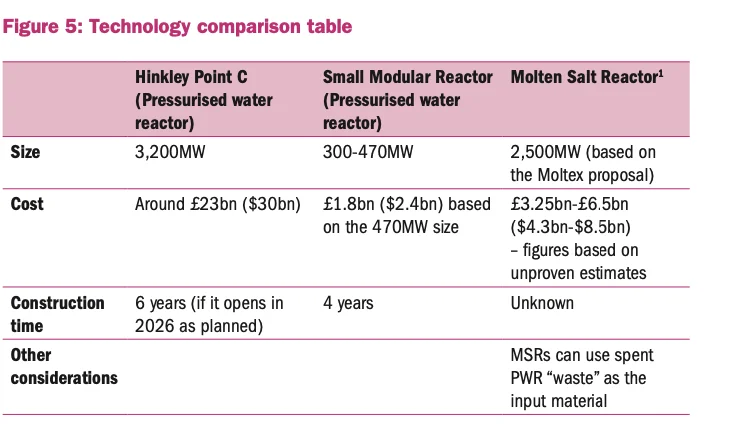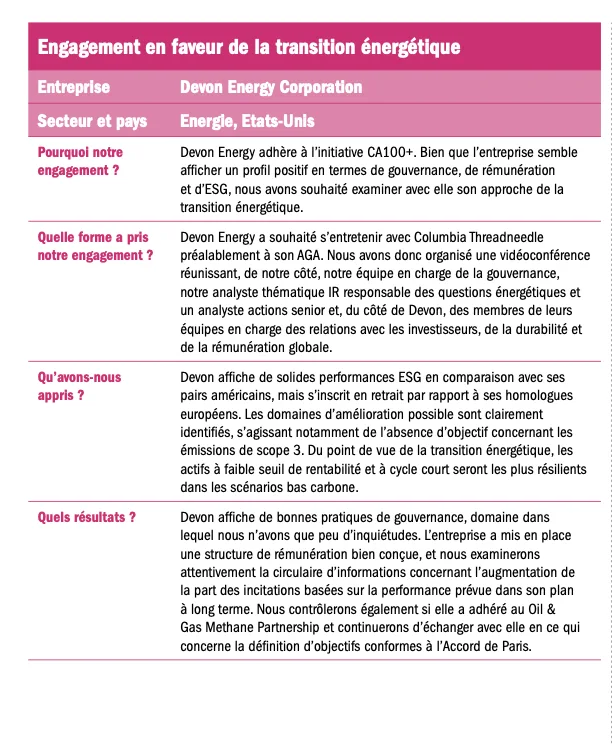Jess Williams Companies , Portfolio Analyst, Responsible Investment Columbia Threadneedle Investments.
Nuclear power offers a number of advantages over other clean energy technologies: it provides clean and reliable baseload power, which is the minimum level of demand on an electrical grid over a period of time, which less reliable renewable sources can struggle to offer; it is able to provide energy reliably no matter the time of day and regardless of weather; and it requires fewer materials compared with other transition technologies (Figure 1). Such qualities are key to being able to fully transform our energy systems to zero carbon power.
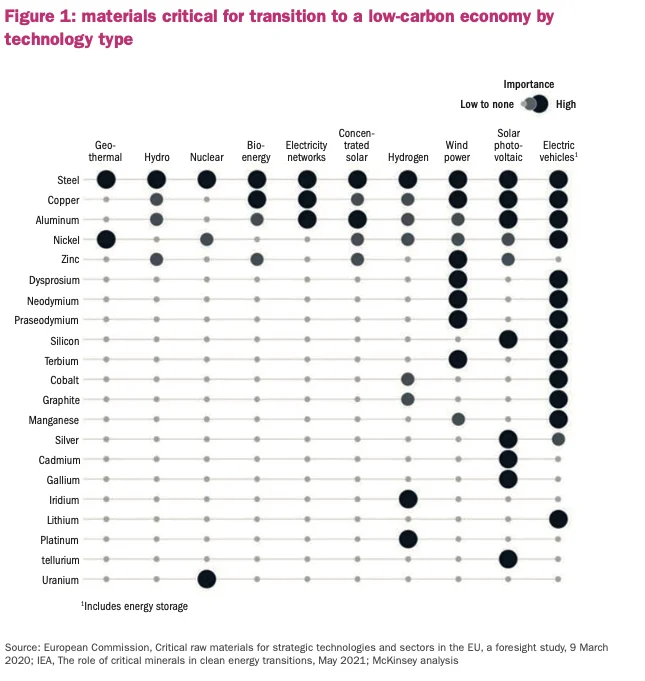
However, nuclear is also controversial. Radioactive waste and incidents such as the 2011 Fukushima disaster have made the public wary of the technology. Enriched uranium also has applications in nuclear weapons, which is why nuclear programs led by countries such as North Korea, Iran and of course Russia are such a concern for western governments. On top of these substantial worries, the cost of nuclear is high and projects are often delivered late and over budget – although some Asian regions appear to have bucked this trend.
But the positives seemingly outweigh the negatives, with nuclear energy coming back into focus – particularly in the UK and Europe – as governments look for ways to improve energy security and achieve ambitious emissions reduction goals. Most nuclear power plants in existence today are third generation plants which mostly use pressurised water reactor technology. These are relatively inefficient at utilising the energy stored in raw materials, typically using only 5%-8% of available energy, which consequently generates a lot of waste. Fourth generation nuclear reactors, however, are made up of a group of different technologies such as advanced heavy water reactors and molten salt reactors and can utilise 95%-98% of energy available in the fuel – although they remain a long way off commercialisation. Small modular reactors (SMRs) which take up much less space than conventional plants and can be built much more quickly and in a standardised fashion, are a nearer-term prospect. In addition, nuclear fusion has also been in the headlines due to recent breakthroughs in the space.
How to bring costs down?
As Figure 2 shows, countries like South Korea and China have been successful at reducing the cost of nuclear. A lot of this is due to construction practices. Both countries replicate the same plant design repeatedly rather than approaching each project in a bespoke manner, as happens elsewhere. This significantly reduces costs and delays. Another difference is that due to the regularity of such projects occurring, the workforce has the necessary skills. In regions where plants are built infrequently, reskilling of the workforce is required which takes time.
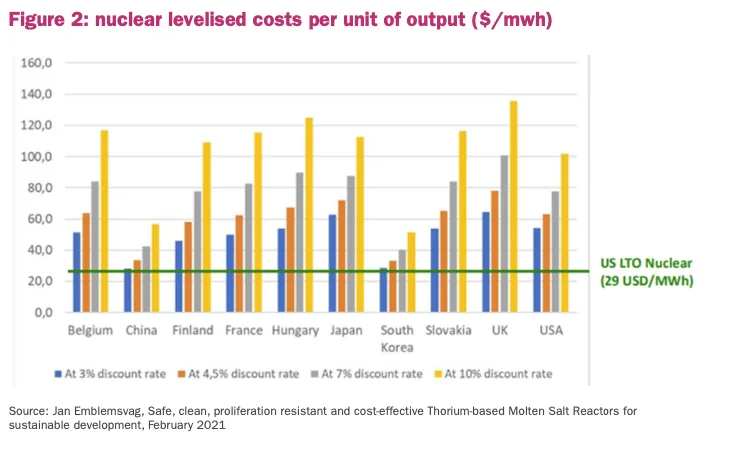
Looking at the costs of Hinkley Point C, a plant under construction in the UK which is scheduled to be finished later this year, the largest share is the financing (Figure 3). This is because European nuclear projects tend to be relatively risky for banks – political will tends to be divided and changeable, and projects are often much delayed and over budget. If countries like the UK could adopt South Korea’s approach to building more standardised plants, avoiding some of the delays and overruns, it could help bring financing costs down. However, if these standardisation benefits were to be achieved they would be set against the current background of low but increasing interest rates, which long lived infrastructure projects like nuclear are particularly sensitive to.
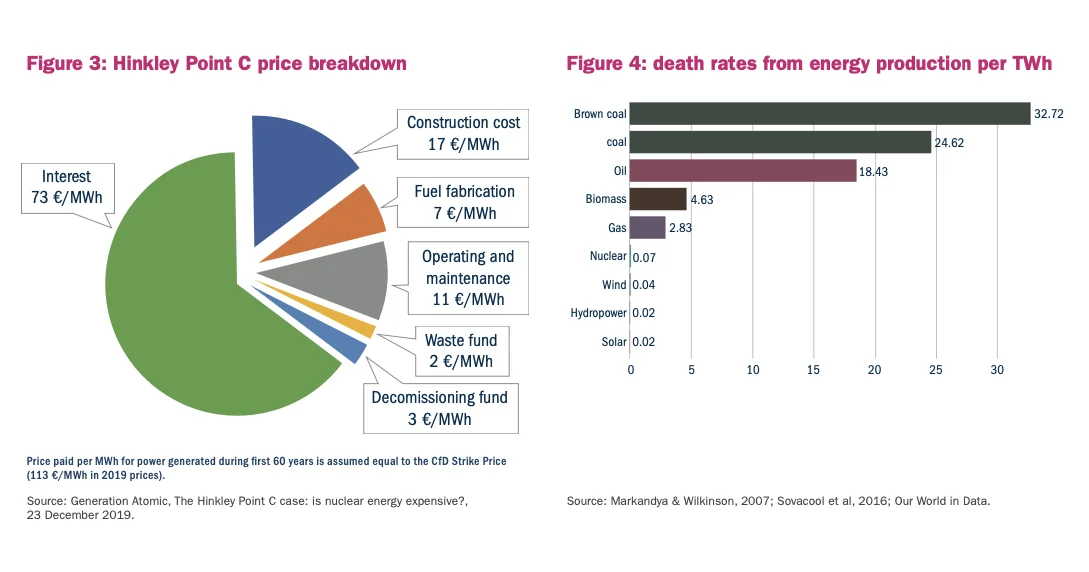
What about safety?
Safety is a common concern with Nuclear technologies, due in large part to historical accidents like Fukushima and Chernobyl. However, both these examples are somewhat site specific and unlikely to reoccur at other nuclear facilities. Chernobyl, for example, had a RBMK reactor which was never used by any country outside the USSR due to concerns over a number of its characteristics. Fukushima, meanwhile, is on the fault line of two tectonic plates, which makes the site prone to earthquakes and their knock-on effects such as tsunamis. The Fukushima plant was not designed appropriately for its location, so when a major earthquake occurred disaster ensued. Despite the site-specific circumstances of these incidents, concerns around waste and potentially unforeseen future accidents will remain.
The Joint Research Centre (JRC), the European Commission’s science and knowledge service, recently fed into a review on the decision on whether nuclear should be included in the EU’s sustainable finance taxonomy.
It concluded that there is not any “science-based evidence that nuclear energy does more harm to human health, or to the environment, than other electricity production technologies [ie wind and solar] already included in the taxonomy as activities supporting climate change mitigation”. Indeed, as Figure 4 shows, when factoring deaths from air pollution, nuclear appears in a very favourable light relative to fossil fuels and biomass, and is quite comparable to wind, hydropower and solar.
What the future holds
In the short term we are likely to see more third-generation pressurised water reactors commissioned. Indeed, French president Emmanuel Macron recently announced at least six new reactors with the potential to increase this to 14.
Following this, next-generation SMRs should start to come online towards the end of the decade. China hopes to have its first SMR online by 2026 and the British government hopes to have SMRs (manufactured by Rolls-Royce ) supplying energy to the grid by the early 2030s.
In the longer term, fourth generation technologies could become a commercial reality. A lot of these technologies have been around for decades, and some have been tested, but no one has succeeded in bringing them to market. For example, a number of government-funded research initiatives and some start-ups have recently begun working in the molten salt reactor space.
Finally, nuclear fusion is also a consideration. All the above technologies are nuclear fission, which involves splitting large atoms (usually Uranium). Nuclear fusion, however, focuses instead on merging light elements (like hydrogen). There is a long-standing joke that nuclear fusion is always 40 years away, but recent breakthroughs combined with a significant increase in research funding – from the order of hundreds of millions of dollars to billions of dollars – mean we are including it in our long-term prospects. Fusion companies estimate that it will still take five years to get more energy out of a fusion reaction than goes in, but they think we could see pilot plants in 10 years. By 2050 they think nuclear fusion could be providing a single-digit percentage of the global energy mix. Fusion has additional benefits in that it produces waste that is less radioactive than during fission and has limited military use, which would likely mean greater acceptance by the public.
